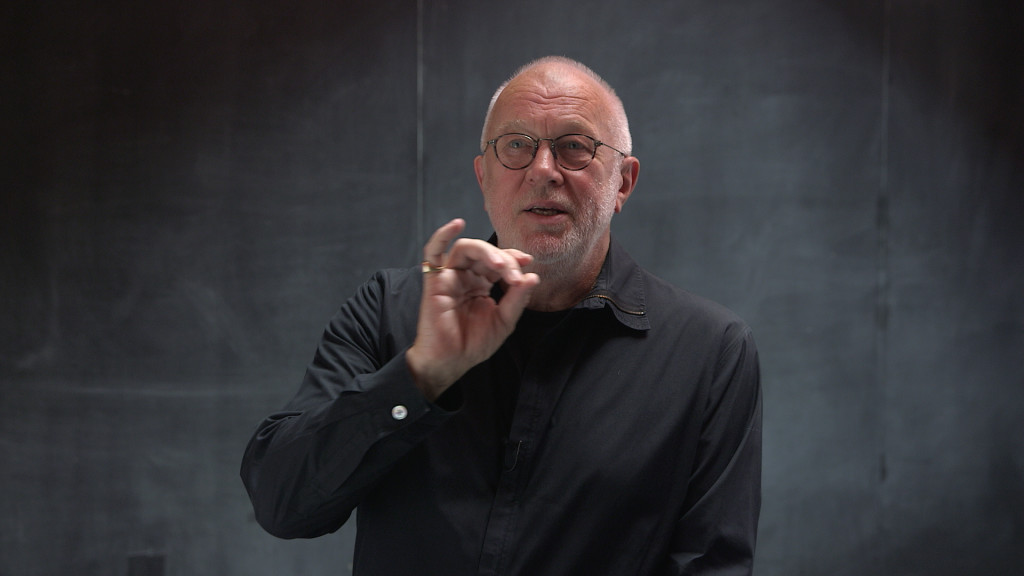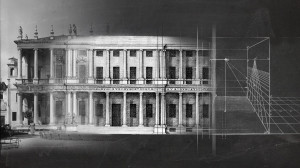Architectural Imagination HarvardX Course to Launch in February 2017

K. Michael Hays, Eliot Noyes Professor of Architectural Theory, associate dean for Academic Affairs, and interim chair of the Department of Architecture
Architecture engages a culture’s deepest social values and expresses them in material, aesthetic form. In this Graduate School of Design (GSD) HarvardX free massive open online course (MOOC) offered via the edX platform, you will have exclusive access to a GSD alumni cohort to continue your design studies. The ten module course will start February 28, 2017 and is taught by K. Michael Hays, Eliot Noyes Professor of Architectural Theory, associate dean for Academic Affairs, and interim chair of the Department of Architecture; Antoine Picon, G. Ware Travelstead Professor of the History of Architecture and Technology and Director of Research; and Erika Naginski, professor of Architectural History.
As an academic subject and a professional career, architecture is one of the most complexly negotiated and globally recognized cultural practices. Its production involves all of the technical, aesthetic, political, and economic issues at play within a given society. While this course can be taken by those without a background in architecture, GSD alumni may find especial interest in the examination of some of history’s most important examples that show how architecture engages, mediates, and expresses a culture’s complex aspirations. Vivid analyses of exemplary buildings from a wide range of historical contexts, coupled with hands-on exercises in drawing and modeling.
 The first part of the course introduces the idea of the architectural imagination as a faculty that mediates sensuous experience and conceptual understanding. Two examples of the architectural imagination—perspective drawing and architectural typology—are explored through video presentations and hands-on exercises. You will be introduced to some of the challenges involved in writing architectural history, revealing that architecture does not always have a straightforward relationship to its own history.
The first part of the course introduces the idea of the architectural imagination as a faculty that mediates sensuous experience and conceptual understanding. Two examples of the architectural imagination—perspective drawing and architectural typology—are explored through video presentations and hands-on exercises. You will be introduced to some of the challenges involved in writing architectural history, revealing that architecture does not always have a straightforward relationship to its own history.
In the second set of modules, the course will address technology as a component of architecture’s realization and understanding. Architecture is embedded in contexts where technologies and materials of construction—glass and steel, reinforced concrete—are crucial agents of change. But a society’s technology does not determine its architectural forms. You will discover ways that innovative technology can enable and promote new aesthetic experiences, or disrupt age-old traditions. You will witness architecture’s ways of converting brute technical means into meaningful perceptions and textures of daily life. The interactions of architecture and modern technologies changed not only what could be built, but also what kinds of constructions could even be thought of as architecture.
The final set of modules confronts architecture’s complex relationship to its social and historical contexts and its audiences, achievements and aspirations. As a professional practice deeply embedded in society, architecture has social obligations and the aesthetic power to negotiate social change; to carry collective memories; even to express society’s utopian ideals. architecture’s power of representation, and see how architecture has a particular capacity to produce collective meaning and memories.
This on-line course is free and open to anyone. For more information, and to sign up for the course, see the course page.
Instructions on How to Enroll and Join the GSD Cohort
In order to participate in the alumni cohort for the Architectural Imagination, you must:
- Enroll in the course through edX.
- Join the cohort by contacting the GSD using the online form provided.
Step 1: Enroll in the Course
- Navigate to the course enrollment page.
- Select the “Enroll Now” button.
- Create an edX account, if you don’t have one already. (If you already have an edX account, sign in to complete the enrollment process.)
- Verify your new edX account’s email address. Email verification is required.
- Once you’ve verified your account, you will be asked if you want to audit the course for free (via the “Audit This Course” option) or earn a verified certificate (via the “Pursue a Verified Certificate” option). Note: You do NOT need to upgrade to the verified track in order to join the cohort.
Step 2: Join the Cohort
- Complete and submit the following online form.
Frequently Asked Questions
Q: When can learners access the course?
A: Prior to the official launch date (2/28/2017), the course record will appear in the learner’s edX dashboard with the start date listed. Once the course launches, a link to access the course will appear in the dashboard.
Q: How long is the course?
A: The course includes ten modules, and we plan to pace the cohort at one module per week (for ten weeks). However, the course is, officially, self-paced, so a learner can work with the cohort or at his or her own pace (or a mix of both).
Q: How long do I have to complete the course?
A: The cohort will run for ten weeks, but the course is self-paced and will remain open for 9-12 months.
Q: Are there any course prerequisites?
A: No, there are no prerequisites for the course.
Q: How much does it cost to enroll in the course?
A: The audit track is free. The optional certificate track is $99.
Q: What is a verified certificate?
A: See the edX summary page for a detailed description.
